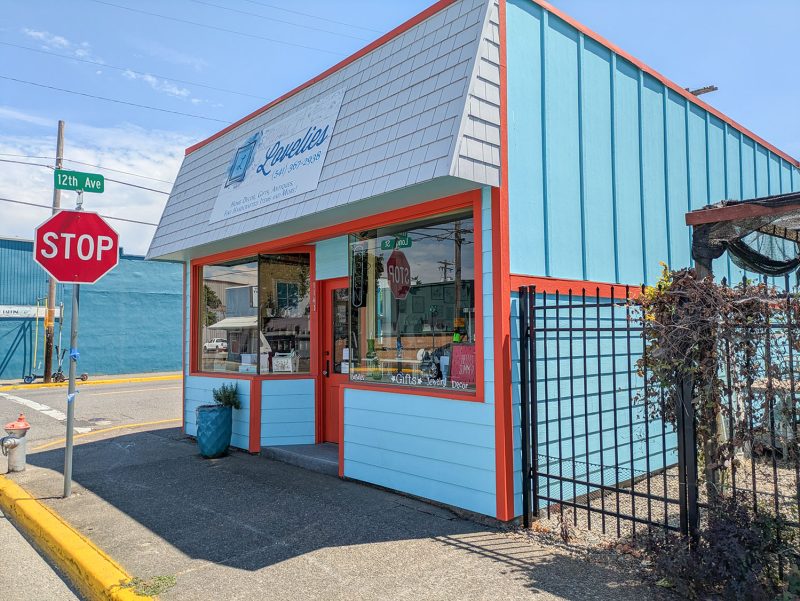After about six years of offering monetary incentives to improve downtown buildings, the money pot started drying up, but City Manager Jason Ogden is looking for ways to replenish the fund.
“We’re actively working to bring CEIP back to life by steadily replenishing the fund,” he said. “Using rental and alternative revenues is one way to do that.”
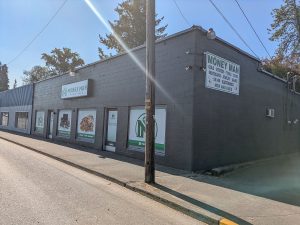
The Commercial Exterior Improvement Program (CEIP) was a matching grant opportunity for commercial properties to make exterior improvements on their properties.
The primary objective was to incentivize the improvement of the city’s aesthetics to attract visitors, customers and new businesses.
Businesses could receive as much as $5,000 in matching funds for approved projects, with additional opportunities to obtain more. With some stipulations by the city, projects may include landscaping, painting, facade or parking lot improvements, business signs or handicap-accessibility.
CEIP was initially operated by the Sweet Home Active Revitalization Effort (SHARE) from 2010 to 2015. In 2018, the City of Sweet Home revived the grant program with money it had sitting around for economic development purposes. Through both operations, multiple businesses took advantage of the opportunity to invest in improvements.
Back to the Beginning
CEIP’s pre-origins could be traced back to 2004 when Sweet Home Economic Development Group (SHEDG) formed a revitalization committee for the purpose of sprucing up the downtown core.
Board members said they wanted to assist in small projects that would improve downtown’s look and attract new businesses and shoppers. The nonprofit considered investing in revitalization projects with the idea that, then-board president Ron Moore said, they could try doubling the money invested through matching funds.
In 2004, their first revitalization project was completed – a “facelift” at the corner of 12th and Main streets near Sunshine Espresso, providing benches, trash cans, landscaping and a fresh coat of paint.
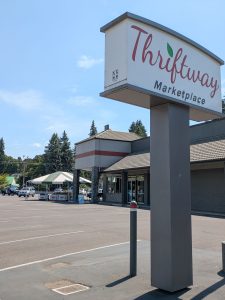
Once SHEDG got a better grasp on its direction to assist in downtown revitalization, it budgeted $35,000 for projects in addition to the thousands of other dollars they invested throughout the community (In 2006, SHEDG reported it had – since 2001 – distributed more than $102,000 in grants and donations to the community, including median strip projects, murals, Main Street banners, and funds to Sweet Home Community Foundation for grants to worthy causes and organizations).
In 2005, the revitalization committee started offering a $500 matching grant for facade improvements for up to 10 businesses.
They approved applications for The Rio Theatre (bench and neon lighting), Sunshine Espresso (paint), Seamingly Creative (paint) and Jack Pedersen’s Chiropractic (paint), and made plans to budget another $5,000 to the pot for next year.
News articles reported that Oregon Prospecting and Rita’s Relics also benefitted from SHEDG’s facade improvement funds.
But this wasn’t officially “CEIP” yet.
In 2008, SHARE was formed as an advisory council to SHEDG, effectively replacing the revitalization committee.
In 2010, SHEDG hired Community Development Director Brian Hoffman to work closely with SHARE and provide leadership in their economic development efforts. That same year, CEIP was born with a $6,000 annual stipend from SHEDG. Later, the budget kept increasing up to as much as $40,000.
Increases in matching funds also came as a response to a concern that not many businesses were taking advantage of the money being offered.
Some SHARE members theorized that the $500 wasn’t enough to convince a business owner to take on an improvement project, particularly given the economy. Maybe more would help.
The new incentives seemed to have worked. Chamber of Commerce members could receive an additional $500, matching funds were not required, and businesses could receive up to 10% of their project cost if they used local contractors (a $50,000 project could receive $5,000 in grant funds).
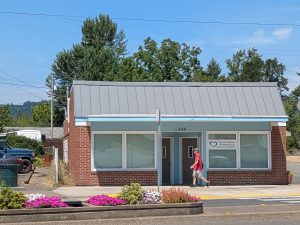
CEIP-funded upgrade projects through SHARE** included: signs for Attitudes, South Santiam Salon, Funky Munky, Mechals Motors, and Sweet Home Funeral Chapel; signs and improvements for Hartsook Farmer’s Insurance, and Foster Lake Bed and Breakfast; improvements on the building that housed Cutloose Hair and Nail Co.; sign and painting for LB Lock and Key; asphalt repair at McLain Racing; facade improvements at the Solar Way Building (12th & Main); landscaping and wall construction at Edgewater RV Resort; roof replacement at O&M Tire Factory, and Lilies and Lovelies; Veterans Hall; Sweet Home Emergency Ministries; The New Era/Liquor Store building; Speedee Mart; and other drainage, painting, landscaping, storefront, paving, signage and awning projects.
According to Hoffman and then-SHEDG board president Kevin Strong, one of the main goals for providing CEIP grants was to provide the catalyst needed to encourage other commercial building owners to take action on their buildings.
In 2014, SHEDG determined that its $60,000 CEIP investments to date helped fund as much as $260,000 in improvements.
An exhaustive list of CEIP recipients through SHARE was not available, but historical New Era articles were combed through to identify many. SHARE ended its CEIP after a five-year run from 2010 to 2015.
City Steps In
By 2017, the City of Sweet Home was sitting on about $215,575 in the Housing Rehabilitation Fund, which “had been inactive for some time,” Ogden said.
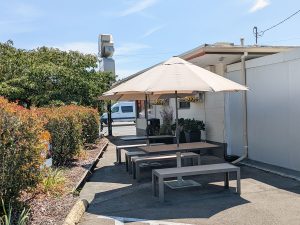
“The city had taken over a set of federal home loans, and as those loans were repaid, the funds were deposited into this account,” he explained.
During the budget process for the 2017-18 fiscal year, the fund was renamed the Economic and Community Development Fund (ECD), and $200,000 from the General Fund was transferred into it, giving the fund a total of $415,575.
According to a May 2017 article on the subject, the money would not be for any specific project or program, but would be for use by the Community and Economic Development Director for the overall purpose of economic development opportunities – whatever that might look like.
In 2018, the city’s new Community and Economic Development Director, Jerry Sorte, recommended the city allocate $200,000 from that fund for its own version of a CEIP grant. During that time, Chamber of Commerce President Bill Matthews noted business owners wanted a program available to help them with improvements.
“Left on their own devices, they’re not going to do it,” Matthews said. “There hasn’t been a proactive approach to improving the appearance of businesses and blocks. They’ll need to be encouraged, or it won’t work.”
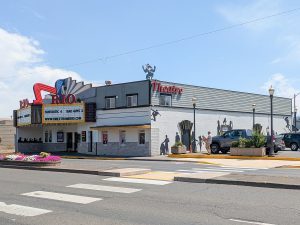
Scott Snedeker and Thomas Baham were the first recipients of the city’s CEIP program in 2018.
Snedeker received $4,290 for stucco repair, architectural trim and painting on buildings he owned between 1200 and 1206 Main Street. Baham won three grants totalling $13,902.29 for work on The Rio Theatre and its adjoining park that included landscaping, picnic tables, lighting, painting, tile facade and parking lot improvements.
For about six years, businesses throughout the city received CEIP grants totalling an additional $324,449.25. During that time, the only money – if any – replenishing the ECD Fund was from the old federal loan program. As many as 55 projects have been completed through the CEIP program from 2018 to 2024.
Recipients were: Aaron Hegge Agency, Dairy Queen, Dan Dee Sales, Downtown Restaurant and Lounge, East Linn Property Management, Freedom Hill Church, Foster Lake Inn, Gleaners, Hoy’s Hardware, Industrial Welding, Into the Brew Coffeehouse, Layman, Lilies & Lovelies, Mary Gilds, McClain Racing, Moneyman, O&M Point S Tire, Peter Mynar, Ridgeway Health, River of Life Fellowship, Service with a Smile, Snegirev, Steelhead Fitness, Sugar Vibes, Sunshine Espresso, Sweet Home Barber Shop, Sweet Home Pregnancy Center, Sweet Home Veterinary Hospital, The Point Restaurant, The Woods Roadhouse, Thriftway, Valley View Logging, Walker Heating & AC, and Wolthuis.
“The intention was to use those resources to support local business growth and economic vitality,” Ogden said. “While a portion of the fund has supported CEIP, it’s one of several eligible uses under the broader umbrella of economic and community development.”
In other words, all the money in the ECD Fund was for economic development as needed including funding of the CEIP grants.
According to Ogden, the last CEIP applications were accepted in 2023, at which point the fund was reaching its limit “due to the number and size of grants awarded.”
The last businesses to take advantage of the grants include Hoy’s Hardware, for awning and parking lot improvements; Walker Heating & AC, for exterior painting; and Into The Brew, for exterior painting and signage.
Seeking Revenue Sources
When Ogden took over the role of city manager earlier this year, he began working with staff to find ways to rebuild the fund.
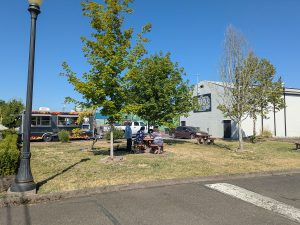
Since May, they have been putting revenue from the Flex Building lease and EV charging station into the ECD Fund, which currently has $5,520. Some of the original federal loans are also still being repaid, which will continue to flow into the fund over time, Ogden said.
“No new applications are being accepted currently, and we are not issuing new CEIP awards at this time,” Ogden said. “However, the goal is to bring the program back as funds become available.”
The city manager said he realizes CEIP has been an impactful tool for local small business development, downtown revitalization and “community confidence.”
Making it flexible, accessible and controlled locally – rather than by state or federal program – helps the city be able to use the money according to Sweet Home’s specific needs.
“Ultimately, this kind of local investment builds trust and momentum,” he said. “It signals to entrepreneurs that the city is a committed partner, and that small businesses matter here. We’re optimistic that in the future we’ll be able to reintroduce CEIP as a meaningful support tool for our business community.”
** Other businesses may have received facade improvement funding through SHEDG, but may not have been reported on.





